Meet Barbora Batokova. During the day, she manages a small team of user experience designers, but outside of work, she’s the creator and woman behind @fungiwoman. Originally a personal photography project, @fungiwoman has since evolved into an engaged community dedicated to the fascinating world of fungi.
Having grown up mushroom-hunting in the Czech Republic with her family, Barbora is no stranger to foraging. Her knowledge of the subject is extensive, and she has started leading mushroom walks in her hometown of Pennsylvania.
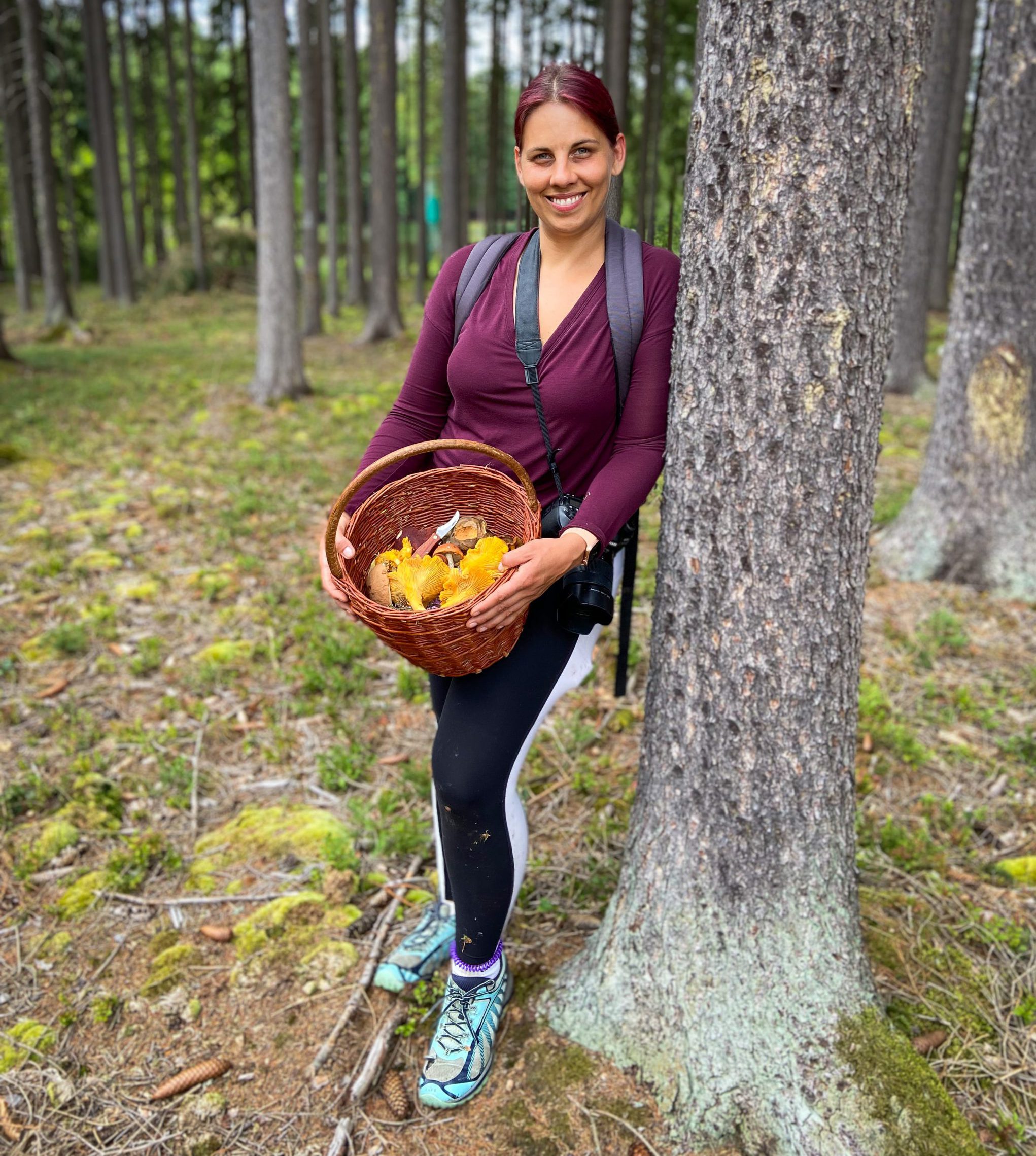
We had the pleasure of speaking with Barbora; we learned about her family’s traditional ties to foraging, grabbed some mouth-watering recipes, and discussed the fundamentals for first-time foragers. Oh, and did we mention she also shared some stunning mushroom photographs with us? Dive into our conversation below.
Q: For those who don’t know you, can you tell us a little bit about your journey creating @fungiwoman?
I initially created @fungiwoman as a personal photography passion project in 2017. Many things came together for me during this time. I’d achieved many of the goals I’d been working toward and was able to enjoy the fruits of my labours.
With my design career, I was in a solid (but maybe a bit unexciting) place. Then the political climate in the US changed, and I was experiencing a lot of dissonance with the values and the people it represented.
I lived on the other side of the world, and I began to feel disconnected from my roots, family, and home country, the Czech Republic. I missed our ancestral home, the woods around it, and mushroom foraging with my mom and grandma.
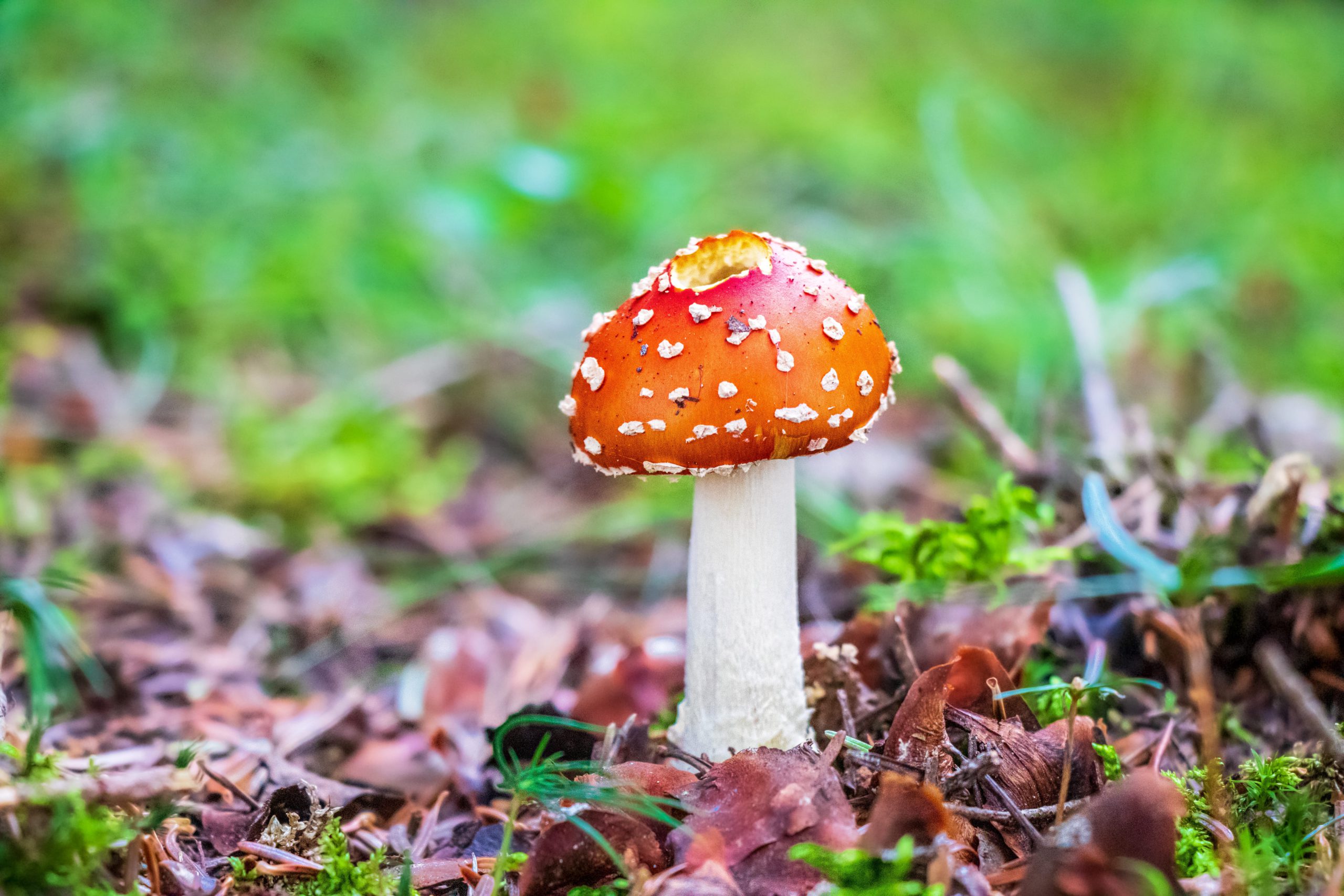
Fly Agaric (Amanita muscaria)
So to reconnect with what I loved and get grounded again, I grabbed my camera (which I hadn’t touched in years). I started hiking in southwestern Pennsylvania and photographing mushrooms that I would later post to my Instagram account @fungiwoman.
As I learned about mushrooms in Pennsylvania, I would share the information and the photos. My following on Instagram grew like wildfire, and soon I established a website to create mushroom profiles, publish mushroom recipes, and sell mushroom-inspired greeting cards, prints and calendars. And in 2022, I started leading guided mushroom walks as well.
Q: How did you initially become interested and get into foraging mushrooms?
In the Czech Republic, mushroom hunting is a beloved national activity — some even call it a national sport! I grew up mushroom hunting with my family in the woods around our ancestral home in South Bohemia. That’s where my passion for mushrooms began.
I owe much of my mushroom knowledge to my grandma. She loved the woods and the mushrooms that grew there. In late summer and fall, my family would head into the woods to pick chanterelles, boletes, and all sorts of other edible mushrooms to create delicious meals with.
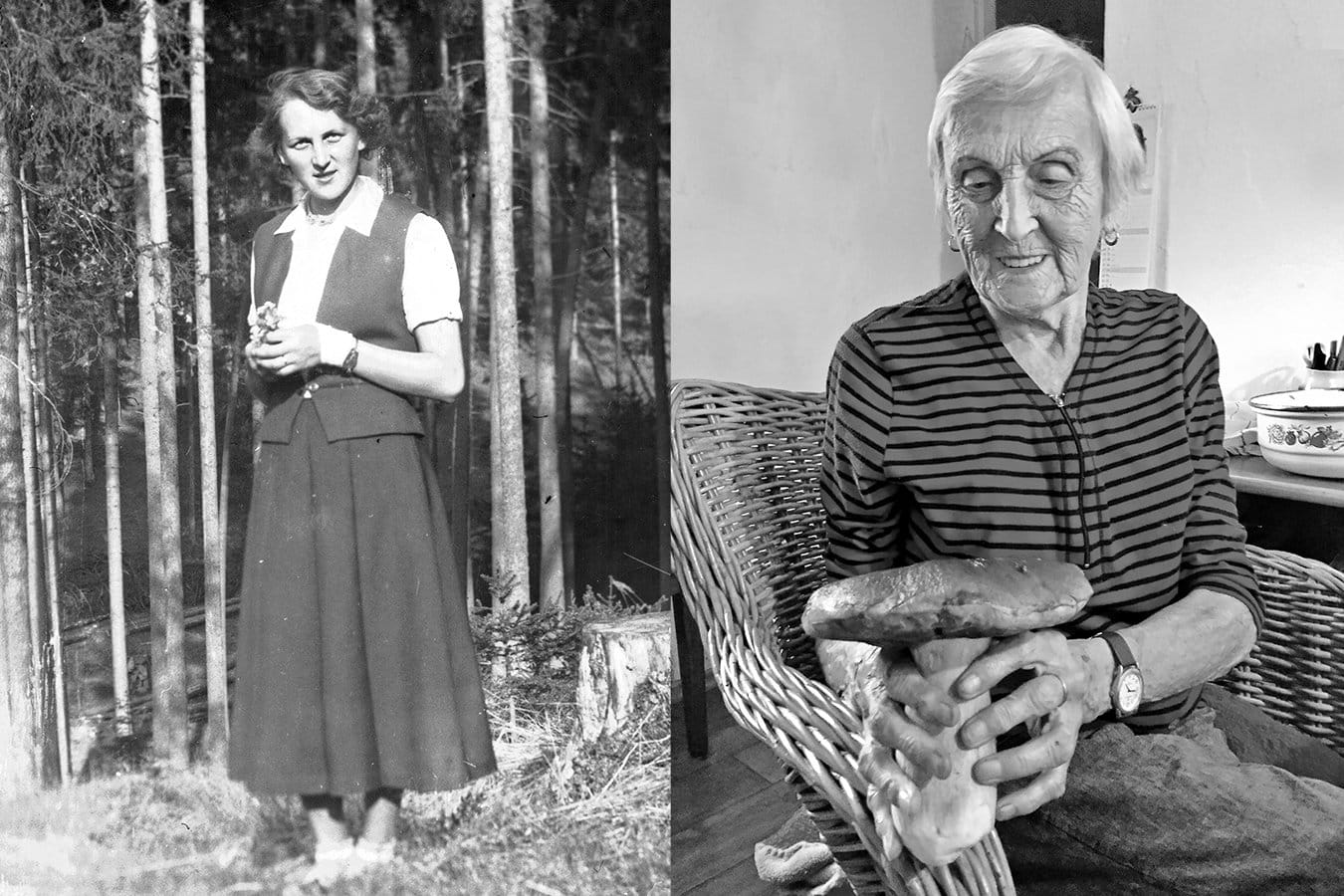
Barbora’s grandma in the woods when she was young (ca. 1947) and then about 70 years later in their family kitchen at the summer house, holding a giant king bolete.
Mushrooms are a huge part of Czech cuisine, and they are part of some traditional meals during the holidays, like the Wild Mushroom Barley Bake (Houbový Kuba), which is served for lunch on Christmas Eve. I’ve always loved to cook and bake, and there’s something very special about cooking with ingredients that you spent time foraging for. In that way, mushrooms become prized ingredients that make the meal special.
Q: For someone who has never foraged mushrooms before, what are some pieces of advice you would give them?
1. Familiarize yourself with the rules and guidelines where you’re foraging
First, it’s important to know where you can forage mushrooms, as the rules vary a lot. For example, in the Czech Republic, where I am from, mushroom foraging is not closely regulated because mushrooms are understood, and it’s such an accepted and well-known activity. You can basically forage anywhere, even in private forests and national parks.
But in the US, it’s a different story. This is partly because people don’t understand that mushrooms are not the same as plants. If it was more widely understood that picking a flower is not the same as picking a mushroom, I think mushroom foraging rules would be much simpler.
For example, you’re not allowed to forage in city parks in Pittsburgh, but you can forage in Pennsylvania state parks and forests as long as it’s for personal use and not for sale or in great quantity. So it’s important to understand the rules and guidelines for where you’re looking to forage.
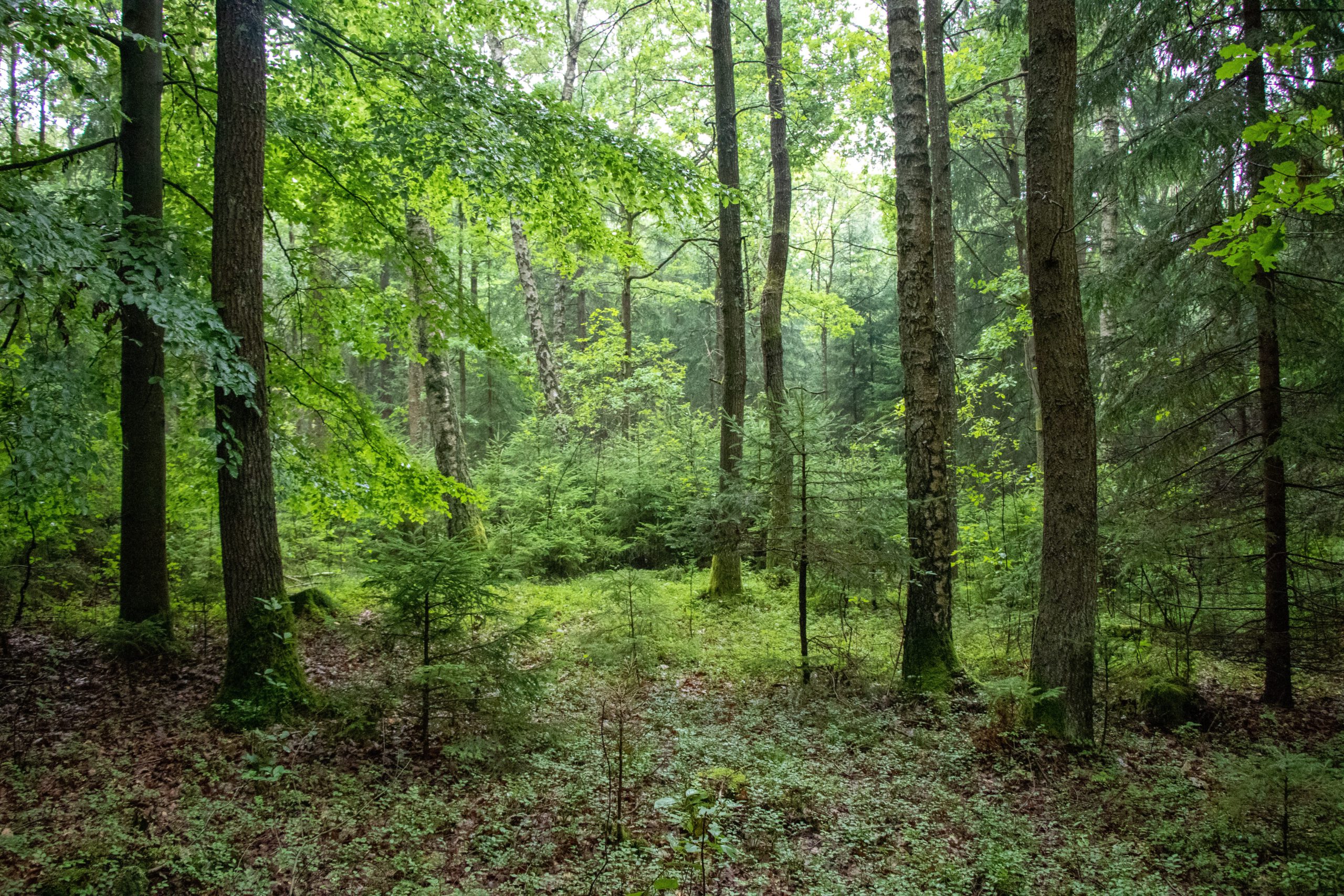
A forest in the Czech Republic.
2. Never eat what you can’t identify
The second important thing to remember is never to eat a mushroom you can’t identify with 100% certainty. The best way to learn how to identify and forage for edible mushrooms in your area is to join a local mushroom club or go with a trusted mushroom identifier or a mycologist. You can check out the list of clubs maintained by the North American Mycological Association (NAMA).
Then, even if you are 100% sure of its ID and know it’s an edible mushroom, always try small quantities of a new mushroom before eating a large batch to make sure it sits with you well. There are many mushrooms, chicken of the woods (Laetiporus suplhureus) being one of them, that some people can eat just fine — while others will get gastrointestinal issues.
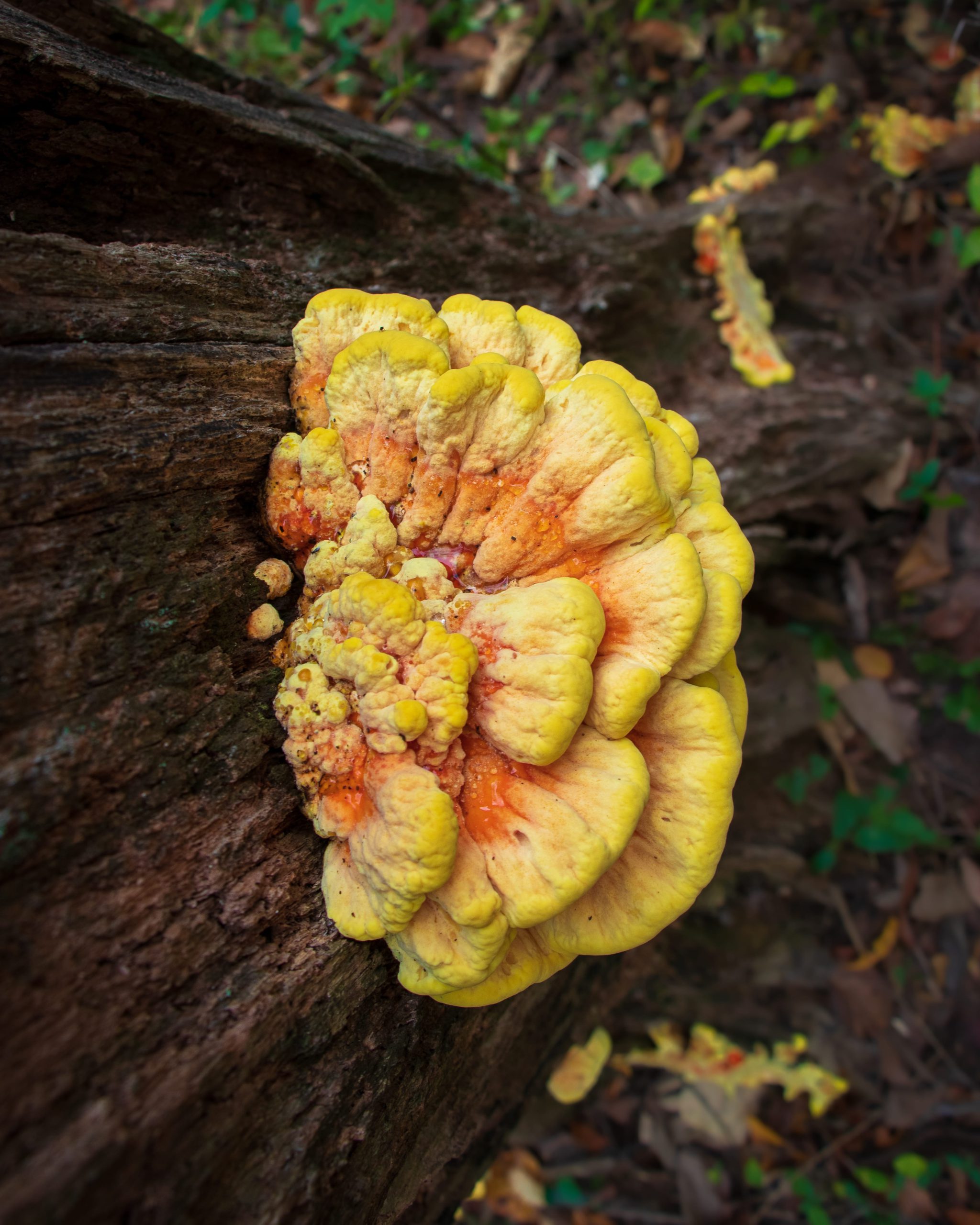
Chicken of the Woods (Laetiporus-sulphureus)
3. Be prepared
Finally, make sure you’re well prepared for your walk: dress appropriately, be prepared for rain, wear repellent/sunscreen, bring food and water, get a woven basket and knife to collect the mushrooms, and most definitely have your smartphone and/or compass. It’s easy to get lost in the woods, especially when hunting for mushrooms. A great beginner’s resource is The Complete Mushroom Hunter by Gary Lincoff.
Q: Do you have any traditions or rituals when you’re foraging?
Mushroom hunting is very special in the sense that it can be a big family affair, a beautiful introspective solo activity, or a fun time with friends. There are different traditions associated with each.
In the Czech Republic, it’s usually a big family affair. I love spending time with my mom and family relatives in the woods mushroom hunting together. It’s a big tradition when family relatives visit our ancestral home. Once we’ve finished foraging, we then have to clean, cook or preserve the mushrooms, which always takes time.
Each person brings back a basket full of mushrooms from the woods, so everyone’s participating. Finally, we all get to sit down together and enjoy the mushrooms in a delicious meal. Some of our favourite meals to make are Mushroom & Dill Soup (Kulajda) and Mushroom Sourdough Soup (Kyselo), both of which are traditional soups made with wild mushrooms.
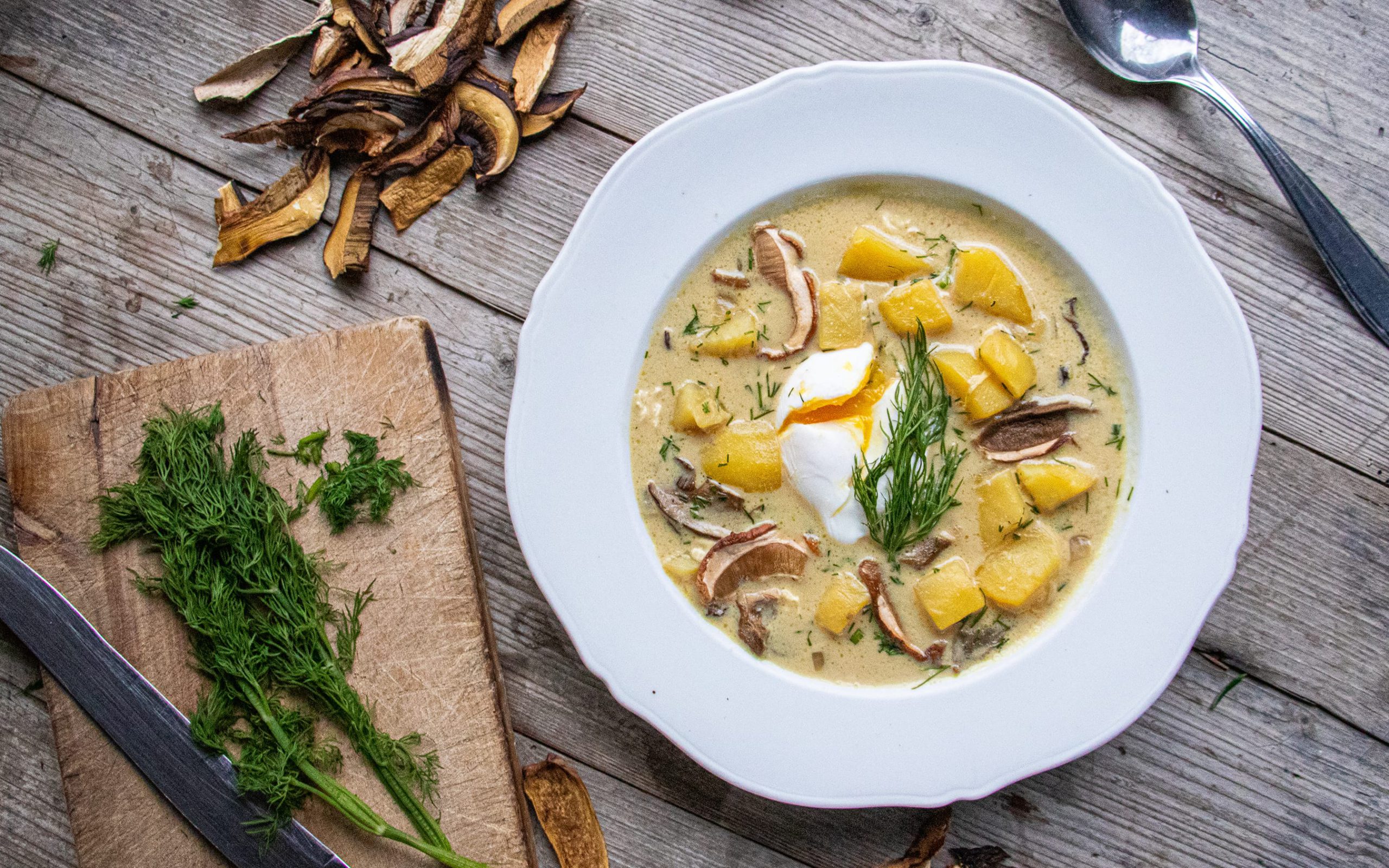
Mushroom & Dill Soup from FUNGIWOMAN.
In Pennsylvania, foraging tends to be a way to spend some alone time in the woods, reflecting and recharging my batteries. It has become a much-needed weekly ritual for me to go into the woods. Since I joined the Western Pennsylvania Mushroom Club (WPMC) and began doing my own guided walks, it’s also become a way to meet new friends and spend time with them. Every year, there’s an awesome event in September the WPMC puts together, the Gary Lincoff Memorial Foray, where we all get together to learn about mushrooms and enjoy delicious mushroom dishes. I love going to that event.
Q: What’s your favourite species of mushroom to forage?
I love to forage for all kinds of mushrooms, but I get most excited about chanterelles. There are different types of chanterelles, and I love cooking with them because most of those dishes represent family memories.
For example, yellowfoot chanterelles (Craterellus tubaeformis), are pure mushroom gold! They are small yellowish-brown, trumpet-shaped mushrooms found in great numbers late in the mushroom season. If the season is good, they cover an entire forest floor. I was very excited to find troves of them two winters ago. I hadn’t seen them for quite some time, and they are the main ingredient in one of my favourite mushroom dishes that my grandma used to make: the Yellowfoot Chanterelle Goulash.
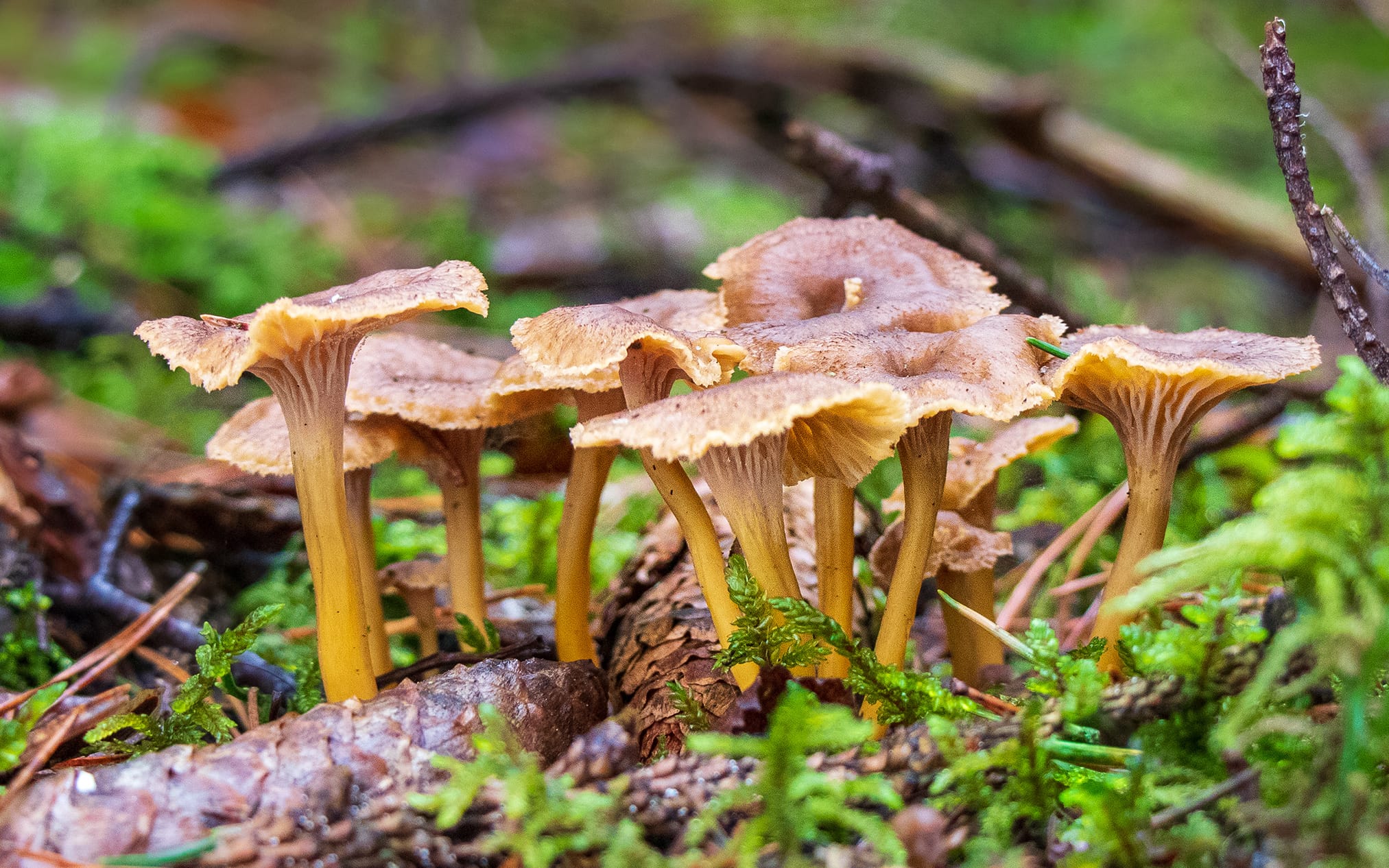
Yellowfoot Chanterelle (Craterellus tubaeformis)
Then there are black trumpets (Craterellus cornucopiodes) which are also chanterelles. They are considered one of the most delicious and unique-looking mushrooms out there. They form hollow, vase-shaped fruit bodies that are black, and if growing among last year’s fallen leaves, they’re almost impossible to spot. It’s always so exciting to stumble upon them.

Black trumpets (Craterellus cornucopioides)
Q: In your experience, what are people most surprised or eager to learn about mycology on your guided walks?
People are often very surprised by all the different types of mushrooms they can find once they start looking for them. And they get very excited about the fact that they’re growing right in their backyard. People’s understanding often gets expanded by what a mushroom is or can look like because they start learning about the different kinds.
Our thanks go out to Barbora for spending time to share her knowledge and beautiful photography with us.
Learn More
Keep Reading
Talking Mushrooms with Tonya Papanikolov
By planting ten trees for every item you purchase, it’s our mission to plant 1 billion trees by 2030. Head to our website to learn more and begin your planting journey with 10% off.

